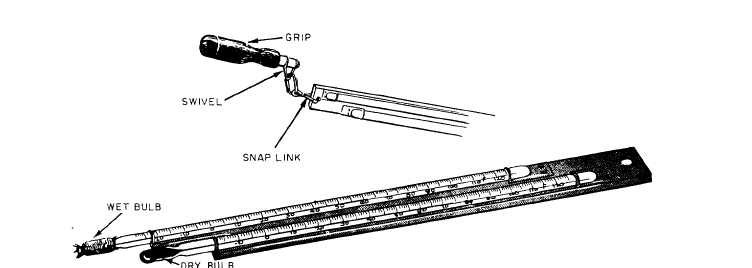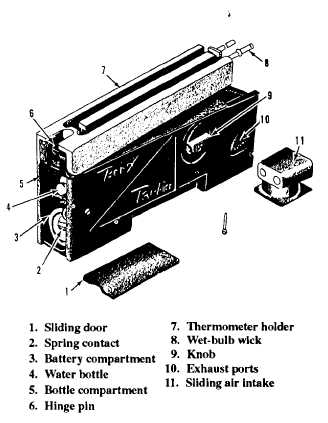Figure 1O-13.-A standard sling Psychrometer.
Figure 10-14.-Exposed view of motorized psychrometer.
When the air is saturated, all three temperatures are the
same.
By using both the wet-bulb and the dry-bulb
temperature readings, you can find the relative humidity
and the dew-point temperature on a psychometric chart
(fig, 10-15).
DEW-POINT TEMPERATURE.– The wet-bulb
temperature lines are angled across the chart (see fig.
10-15). The dew-point temperature lines are straight
across the chart (indicated by the arrows for wet bulb
and dew point). Find where the wet-bulb and dry-bulb
lines cross, interpolate the relative humidity from the
nearest humidity lines to the temperature-line crossing
point. Then, to find the dew point, follow the straight
dew-point line closest to the intersection across to the
right of the chart and read the dew-point temperature.
For example, find the wet-bulb temperature of 70°F.
Next, trace the line angling down to the right to the
dry-bulb temperature of 95°F. Finally, to find the
dew-point temperature, follow the dew-point
temperature lines nearest the intersection straight across
to the right of the chart. The dew-point line falls about
one-third of the way between the 55°F mark and the 60°
mark. You can see that the dew-point temperature is
about 57°F.
RELATIVE HUMIDITY.– To find the relative
humidity (see fig. 10- 15), first find the dry-bulb
temperature. Read across the bottom, find 95°F and
follow straight up to the intersection of the wet- and
dry-bulb readings. The relative humidity arc nearest the
intersection is 30 percent. However, the intersecting line
is below 30 percent and higher than 20 percent. You can
see that the relative humidity is about 28 percent.
BODY HEAT BALANCE
Ordinarily, the body remains at a fairly constant
temperature of 98.6°F. It is important to maintain this
body temperature. Since there is a continuous heat gain
from internal body processes, there must be a
continuous loss to maintain body heat balance. Excess
heat must be absorbed by the surrounding air or lost by
radiation. As the temperature and humidity of the
10-15





